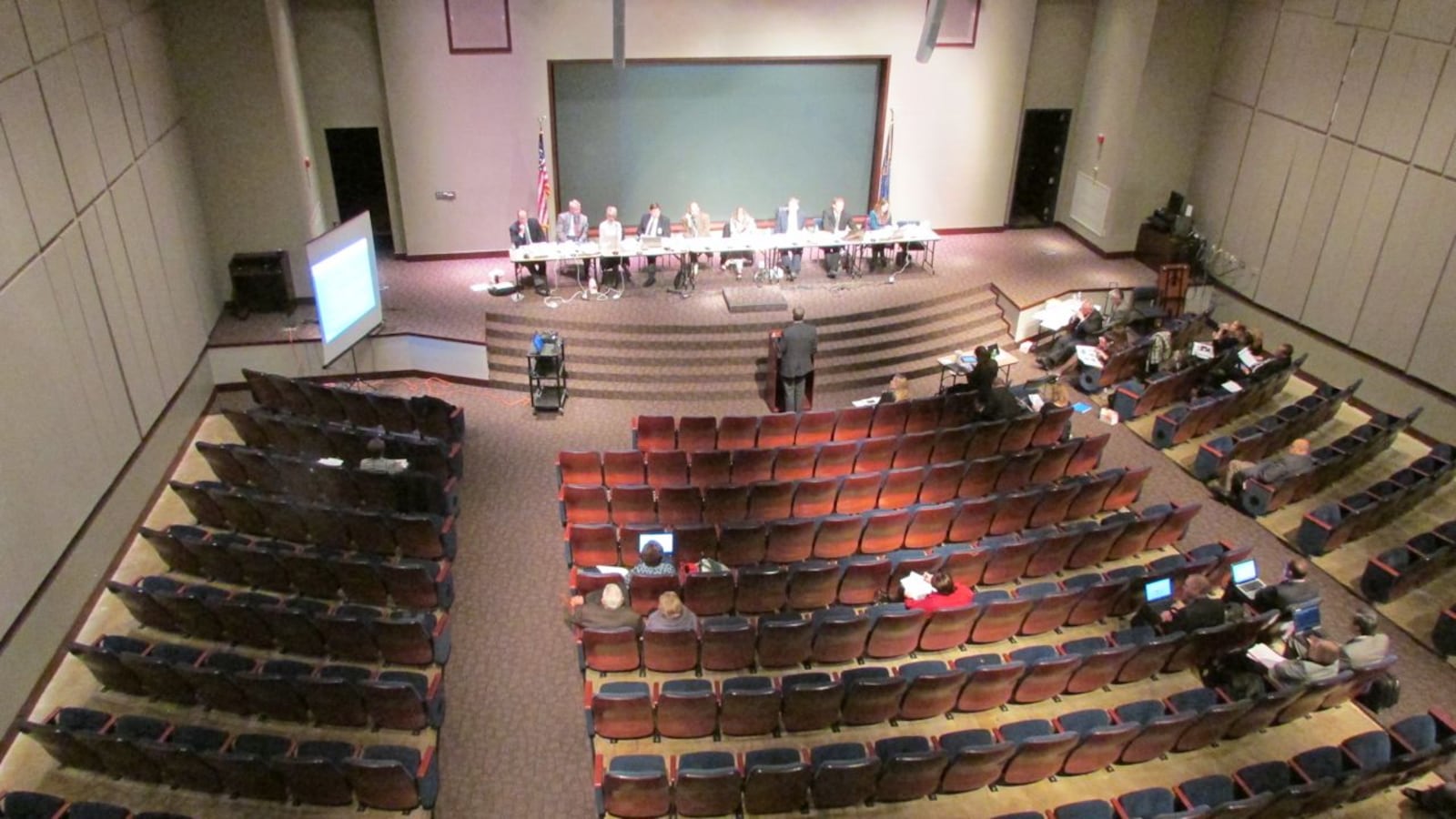Nearly all schools in Indiana that took the state ISTEP test — about 93 percent — received the exact same grade on the state’s accountability report card last year as they did the year before.
But that doesn’t mean every school necessarily qualified for the same grade.
On the contrary, when the Indiana State Board of Education released grades for the 2014-15 school year this morning, it seemed clear that many schools benefitted from a “hold harmless” bill that Gov. Mike Pence signed into law Thursday. That law, prompted by tougher standards that triggered a dramatic drop in 2015 ISTEP test scores, barred the board from giving schools grades for 2015 that were lower than the ones they received the year before.
With that law in place, the grades released by the board today reflected new grades for a fraction of Indiana schools that took last year’s test. Since most schools’ test scores dropped between 2014 and 2015, just 120 of more than 2,000 schools that took ISTEP saw their marks rise, about 5.5 percent. That percentage doesn’t include new schools that got a first-time grade last year or those that switched from “no grade” to a letter grade in 2015.
According to updated data from the Indiana Department of Education, 36.7 percent of school grades stayed the same, and 56.6 percent of schools that took ISTEP were actually “held harmless” at their 2014 grade levels, meaning that otherwise, their grades would’ve gone down.
“After more than 18 months spent advocating to hold our schools and teachers harmless for the transition to more rigorous college and career ready standards and the results of a more rigorous ISTEP assessment, I am pleased to release 2015 school accountability grades that do not penalize schools and communities for this transition,” said state Superintendent Glenda Ritz.
Find your school’s 2015 A-F letter grade with our interactive database.
In a typical year, Indiana schools see many grade changes from one year to the next. In 2014, just 52.4 percent of schools got the same grade as the year before while about 30 percent of schools improved from 2013 to 2014.
The 2015 grades approved by the board this morning showed none of that volatility. In Marion County, 11 of 186 schools, or 5.9 percent, got a higher grade than they did in 2014. That includes four schools in IPS, three schools in Decatur Township, one school each in Pike, Warren and Wayne townships. Every other school received the same grade.
Of the IPS schools that improved, three moved up from F-grades in 2014 — School 55 and School 107 received Ds, and School 93 received a C. Key Learning Community High School got a B, up from a C in 2014.
Throughout Indiana, more than half of all schools received A-grades, 19.4 percent got Bs, 15.2 percent got Cs, 6.1 percent got Ds and 2.6 percent got Fs.
In Marion County, 38.2 percent of schools got As, 19.9 percent got Bs, 18.3 percent got Cs, 16.1 percent got Ds and 6.5 percent got Fs.
For schools that didn’t receive a grade in 2014 — usually for schools that recently opened or don’t have students in tested grades — the board decided today that if 2015 grade calculations would have given them an A, B or C, the schools could keep that grade. If the calculation resulted in a D or F, the school would have “no grade” for 2015 as well. Board member Gordon Hendry was the lone board member who voted against that strategy.
“It’s just my view that we should be one or the other and not ‘split the baby,’” Hendry said.
Ritz said that she was pleased lawmakers enacted the “hold harmless” legislation, but the root of the problem is ISTEP. She’s spoken in recent weeks about her plan to re-work the state’s testing system.
“While I appreciate the work of the legislature to hold schools harmless for the results of last year’s ISTEP assessment, Indiana should move away from labeling Hoosier schools, and in turn Hoosier students, based on the results of a lengthy, pass/fail, high-stakes assessment,” Ritz said in a statement.
Last year’s exam was plagued by scoring problems, design issues and computer glitches, all which have lawmakers looking for a way out once the state finishes its next two-year contract with British-based test company Pearson in 2017. California test writer CTB administered last year’s test.
Going forward, the state will switch to a new A-F model for this year’s grades that focuses on student test score growth.

